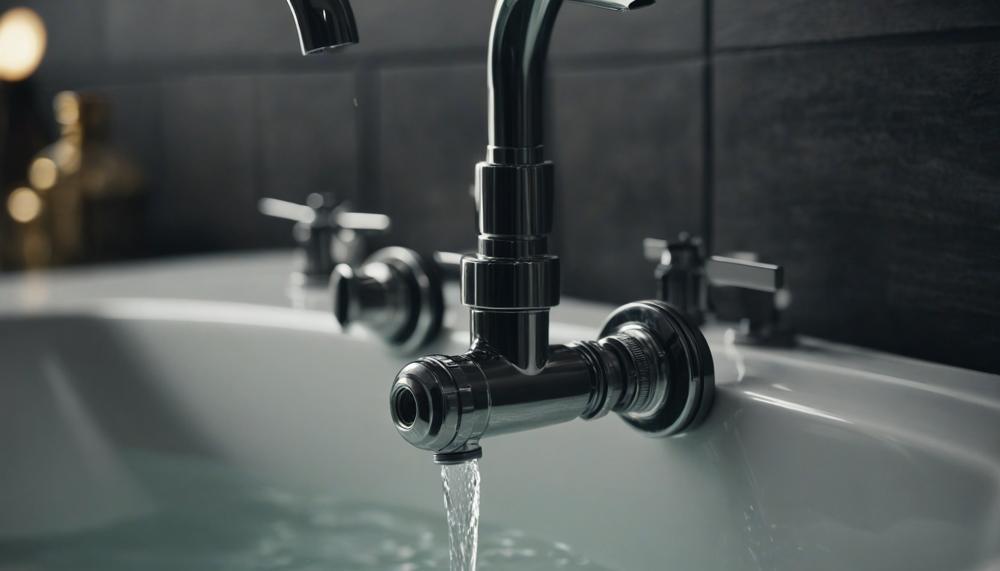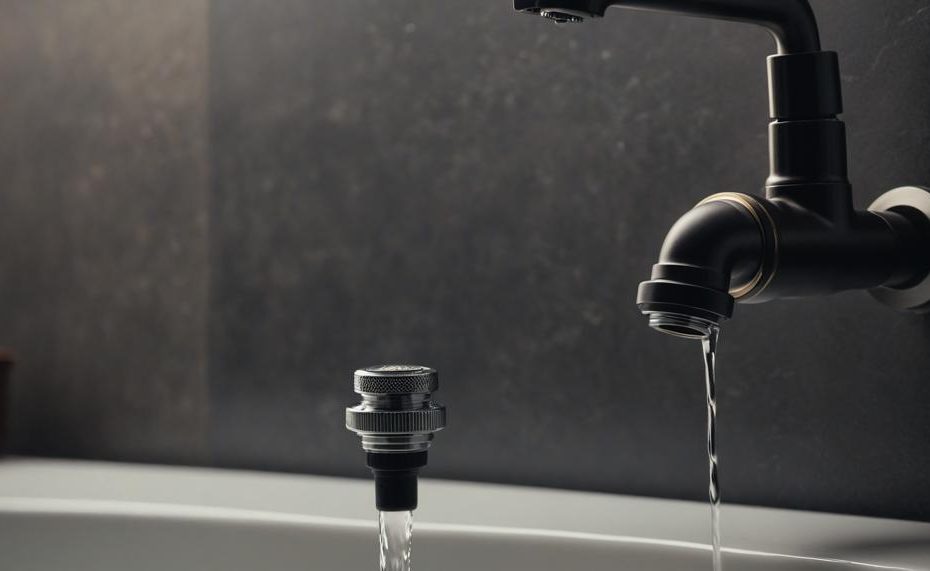Imagine you’re in the middle of a kitchen renovation, and everything looks perfect—except for one small but crucial detail. The faucet supply line is just a bit too short to reach the water source.
This common hiccup can be frustrating, but the good news is that extending a faucet supply line is a straightforward fix that doesn’t require professional plumbing skills.
By following a few simple steps and gathering the right materials, you can ensure your faucet functions perfectly without delay.
Contents
Key Takeaways:
- Measure the Gap: Accurately measure the distance between the end of your current faucet supply line and the water source.
- Gather Materials: Purchase two 3/8″ x 3/8″ compression couplings and two braided stainless steel hoses.
- Shut Off Water Supply: Always turn off the water supply before beginning any plumbing work to avoid leaks or water damage.
- Attach and Adjust: Connect the new hoses and couplings to the existing supply line, making sure everything fits securely.
- Test for Leaks: Once installed, re-check the length and test the water supply to ensure there are no leaks.
Extending a faucet supply line might seem like a minor task, but it’s an essential step to ensure your kitchen or bathroom setup works seamlessly. With these clear steps, you’ll have your faucet up and running in no time, making your renovation complete and functional.
Materials You’ll Need
To extend a faucet supply line, you’ll require several key materials to ensure a seamless and leak-free connection. Below is a detailed list of the essential materials and their purposes.
| Material | Purpose | Additional Tips |
| Wrench | Used to tighten and loosen connections. | A pipe wrench or adjustable wrench is ideal. |
| Pipe Cutter | To cut the old supply line to the correct length. | Ensure the cutter is suitable for the type of pipe you have. |
| Coupling | Connects the old and new supply lines. | Compression couplings are commonly used for this purpose. |
| New Supply Line | Extends the length of the current supply line. | Choose a braided stainless steel hose for durability. |
| Plumber’s Tape | Ensures a leak-free connection. | Also known as Teflon tape; wrap it around threads before connecting. |
| Measuring Tape | Measures the required length of the new supply line. | Accurate measurement is crucial to avoid leaks and misfits. |
Steps to Extend a Faucet Supply Line:
- Measure the Gap: Use a measuring tape to determine the distance between the old supply line and the shutoff valve.
- Shut Off Water Supply: Turn off the water supply to prevent any leaks during the installation.
- Remove Old Coupling: Unscrew and remove the existing compression coupling using a wrench.
- Cut the Old Supply Line: If needed, cut the old supply line to the correct length with a pipe cutter.
- Attach New Coupling: Securely attach a new compression coupling to the end of the old supply line.
- Connect New Supply Line: Attach the new braided stainless steel hose to the new coupling and the shutoff valve.
- Wrap Threads with Plumber’s Tape: Ensure all threaded connections are wrapped with plumber’s tape for a tight seal.
- Tighten Connections: Use a wrench to tighten all connections, making sure not to overtighten.
- Test the Connection: Turn the water supply back on and check for leaks.
Safety Precautions
When extending a faucet supply line, keeping these essential safety precautions in mind is crucial for a secure and leak-free installation:
- Secure Connections Properly: Ensure all connections between the extension lines and the existing faucet lines are properly secured. Use appropriate supports or clips to hold the lines firmly in place.

| Item | Description | Reason |
| Supports/Clips | Tools to secure pipes | Prevents strain and movement |
- Reinforce Connections: Reinforce all connections with additional pipe supports or clips to prevent any strain or movement. This extra step helps avoid leaks or disconnections.
- Develop Troubleshooting Skills: Equip yourself with the necessary troubleshooting skills to tackle common issues that may arise during installation. Knowing how to identify and resolve problems quickly can save time and prevent water damage.
- Check for Loose or Unstable Connections: Always check for any loose or unstable connections. If any are found, reinforce them immediately to maintain a stable and secure installation.
- Follow a Comprehensive Guide: Adhere to a detailed guide that outlines all essential steps, tips, and precautions. This ensures that you do not miss any critical steps during the installation process.
- Use Proper Tools: Utilize the correct tools such as a wrench, pipe cutter, coupling, new supply line, plumber’s tape, and measuring tape. Accurate measurements and secure fittings are essential for a leak-free connection.
- Understand the Value of Extending Water Lines: Appreciate the importance of extending water lines to achieve the desired setup and functionality in your home. Proper planning and execution can enhance your plumbing system’s efficiency.
Tips for a Successful Extension
For a successful and safe extension of a faucet supply line, here are some key tips to ensure a smooth process:
| Step | Action | Details |
| Measure | Measure the gap accurately | Use a measuring tape to determine the exact distance. |
| Gather Materials | Purchase necessary parts | Buy compression couplings and braided hoses. |
| Shut Off Water | Turn off water supply | Ensure no water flows during the installation. |
| Remove Old Coupling | Carefully remove existing parts | Use a wrench to remove old compression coupling. |
| Install New Hose | Attach new hose with couplings | Ensure tight and secure connections. |
| Apply Teflon Tape | Seal threaded ends | Wrap Teflon tape around threads to prevent leaks. |
| Test Connections | Check for leaks | Turn on water and ensure no leaks at connections. |
| Secure Lines | Use supports and clips | Prevent strain or movement in the lines. |
| Final Test | Re-test water supply | Ensure everything is working correctly. |
Conclusion
Successfully extending a faucet supply line can be a straightforward and rewarding DIY project with the right approach and materials. By accurately measuring the gap, gathering essential tools like 3/8″ x 3/8″ compression couplings and braided stainless steel hoses, and following a few key steps, you can ensure a secure and leak-free extension.
Begin by shutting off the water supply to prevent any mishaps. Carefully detach the old compression coupling with a wrench and, if necessary, trim the existing supply line to the correct length using a pipe cutter. Attach the new coupling and the braided hose, ensuring each connection is wrapped with plumber’s tape for a tight seal. Secure the fittings firmly but avoid overtightening.
Once everything is connected, turn the water supply back on and check for leaks. Tighten any connections as needed and reinforce the setup with supports or clips to prevent strain.





